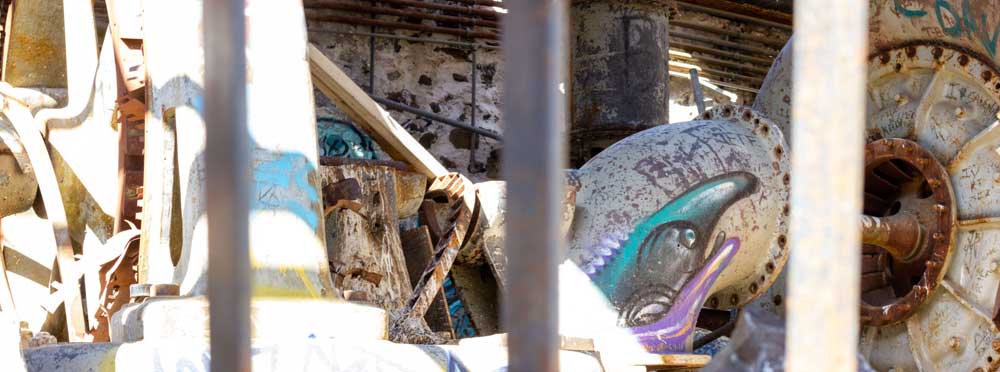Take in the wild power of White River Falls
Published 12:30 am Saturday, March 25, 2023

- Graffiti seen through bars at the abandoned White River Falls powerhouse. The power station here ceased operations in 1963 after churning out hydroelectricity since 1910.
The first signs of spring were evident as my sister and I drove the two hours toward White River Falls State Park. From farmers burning fields and irrigation ditches as they ready for the planting season to the circling turkey vultures above the haze of their light smoke, spring is well on its way.
And on Saturday, it felt like it, with sunny skies and temperatures peaking at 62 degrees if the thermometer in my car was accurate. The first truly warm day of 2023 was ripe for a quick adventure and the drive north.
White River Falls is about 8 miles east of the small community of Tygh Valley in Wasco County, which is 83 miles north of Redmond following U.S. Highway 97, then U.S. Highway 197. The lonely and sometimes winding road north passes through miles and miles of sage and grasslands before descending into the town of Maupin, the sleepy Deschutes River recreation spot just starting to wake up into its season. From there, it’s another 7 miles to the park, which is nestled in among farmland.
As of March 18, the main gate was closed, as were the bathrooms (the Oregon State Park website indicated both were open by March 14, but it looked like there had been a delay). Luckily there is a small parking area just off the road with a kissing gate through which people still can access the park and the short, steep trail down to the falls. (Side note: today I learned the opening for people next to a gate is called a “kissing gate.”)
The day-use area at White River Falls is inviting, with picnic tables and benches strewn over a large grassy patch with many deciduous trees presiding over them, and the roar of the falls not far away. Behind a chain link fence warning hikers to not go beyond it lies the first of the falls here on the White River, so named because of the churned-up glacial silt that turns the water a milky color during spring melts at its headwaters on White River Glacier on Mt. Hood.
The first of the wild river’s descents is its 90-foot eponymous epic plunge over a basalt shelf. With some references to the falls calling it “Oregon’s Niagara,” it’s hard to argue with the moniker over the rush of water here.
The water driven over the falls was great enough to be harnessed from 1910 to 1963 for hydropower, evidenced by the ghostly powerhouse still standing at the base of the first two falls (White River and Celestial Falls). This river powered Wasco and Sherman counties for decades until hydroelectric power from the Columbia River to the north began being used across the state.
That short, steep and rocky 0.4-mile trail leads down the river-cut canyon to afford visitors a better view of the falls as well as the remains of the power plant that utilized the river’s resources. Though covered in graffiti and barred up, hikers can still peer into the old station as well as keep an eye out for more rusty relics strewn around the trail and reflect on the more modern, human histories of this place.
The trail from here is more level, though still rocky through the basalt that makes up the canyon. It’s a short, easy walk to the final Lower White River Falls.
Sections of the river, especially at the powerhouse, may look tranquil, and on a hot day, may seem inviting, but the current is strong and unpredictable and can easily carry away even the most advanced athlete. So heed the warning signs around the park and don’t end up a statistic by taking a dip here.
The trail back up to the parking area is where the steepness is felt most. While the worst section has some steps cut into the rocky trail, they are quite uneven in places and wearing down quickly with use. Even though the trail is short, that steep hike back up makes it more of a moderate trek. If you have any kind of balance issues, bring hiking poles for a little extra help maneuvering the narrow trail and its rocks.
Anyone who has lived in Oregon long enough knows how hot it can get in these northern reaches of the state, especially on trails that offer no shade. Bring plenty of water, keep hydrated and know your limits.
By the time those summer months get here, the falls, like many of our stunning waterfalls throughout the state, dry up considerably as the river water is used for area irrigation. But springtime is a great time to check out these gorgeous falls for a short hike in history and raw natural power.





